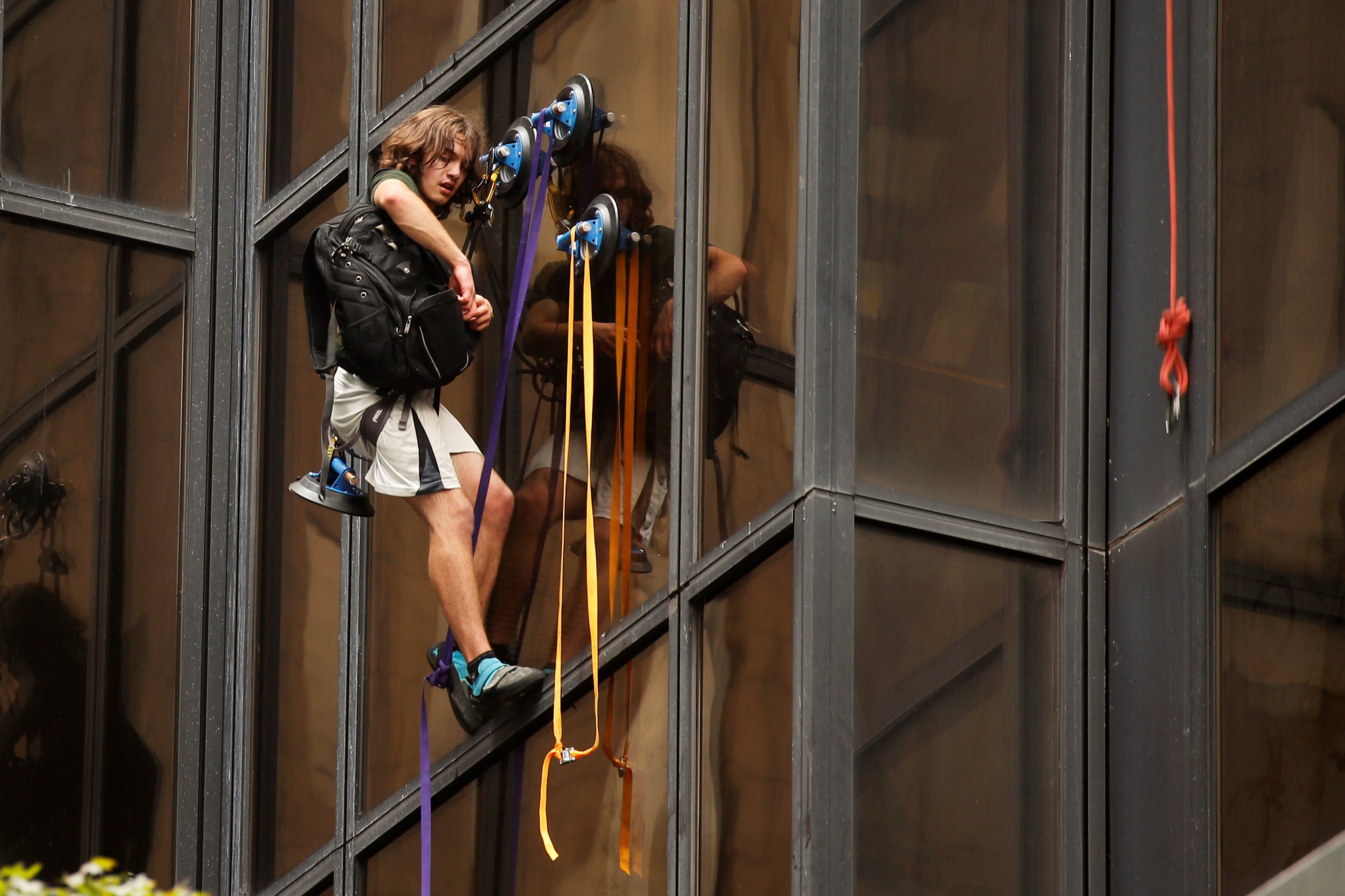
The scene was fit for a superhero movie: On August 10, a crowd of New Yorkers stood in the street, transfixed by the spectacle above. It wasn't Superman; it was Virginia teen Stephen Rogata, scaling Trump Tower with four suction cups. The incident lasted hours, until police yanked him inside.
Stunt's like Rogata's may sound like something out of Mission: Impossible (or Looney Tunes), but as the television show MythBusters once demonstrated, it's actually just science. Here's how it works: Suction cups stick to a surface when the pressure inside the cup is less than the pressure outside it. Removing the air inside can help reduce the pressure, which can be done with a pump or, for a smaller suction cup, like the kind that sticks to shower tiles, by pushing down on it. The higher the elevation, the less pressure exists outside, making a suction cup less reliable, so it's a good thing Rogata made it only about a third of the way up Donald Trump's 68-story skyscraper.
Rogata wasn't the first to climb a tower this way. In the 1980s, Dan Goodwin used suction cups to scale buildings in cities including Chicago, Dallas and Tokyo. In the late 1990s, German designers unveiled the Gekkomat, named for the lizard that can traverse smooth surfaces. The 55-pound unit sends pressurized air from tanks strapped to the climber's back to pads attached his or her hands and feet, creating a vacuum effect. And in May, professional climber Sierra Blair-Coyle ascended a 33-story building in South Korea using LG vacuum cleaners with suction pads attached.
While the world watched, NYPD training & the planning by ESU, HNT + more resulted in a safe resolution. #ItsWhatWeDo pic.twitter.com/ue07uc1zpn
— NYPD NEWS (@NYPDnews) August 11, 2016
According to website Inverse, the Trump Tower climber appeared to use suction cups sold by the industrial supply company Zoro, meant for lifting objects. Each of those cups costs between $80 and $95 and is at most 10 inches in diameter, with a maximum load capacity of 175 pounds. The product consists of a rubber pad and a manual pump. Working the pump removes the air between the pad and a surface, causing the pad to stick. A red line on the pump indicates whether or not the pad is secure. A release valve or tab lets air back in and causes the pad to unstick.
Bryan Wood, CEO of Wood's Powr-Grip, the company that manufactures for Zoro, tells Newsweek in an email that the product's instructions warn customers against using it for activities such as climbing. "While we do have confidence in our products, there are too many variables that could lead to undesirable results, including human error, the fact that the glass and window facades were not designed to support the weight of a person and various environmental conditions," he says.
Because of safety reasons like those, even experienced climbers won't use suction cups, "but they'll use almost everything else," says Tom Kirby, an instructor and guide with the American Alpine Institute, a decades-old climbing school based in Washington state. Not that the Trump Tower ascent was so different from traditional "aid" climbing, in which the climber attaches him or herself to the wall and hangs off it: "It's on a building, and it's using tools that are matched to a building rather than tools that are matched to a natural rock face," Kirby says. And whether dangling from a cliff or a skyscraper, Kirby adds, "there's a performative aspect to all climbing."
Uncommon Knowledge
Newsweek is committed to challenging conventional wisdom and finding connections in the search for common ground.
Newsweek is committed to challenging conventional wisdom and finding connections in the search for common ground.
About the writer
Max Kutner is a senior writer at Newsweek, where he covers politics and general interest news. He specializes in stories ... Read more
To read how Newsweek uses AI as a newsroom tool, Click here.








